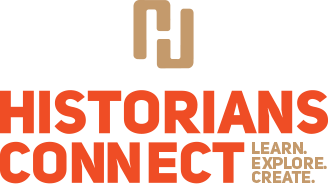African American History Standards
The beneficiaries of slavery were those in power, not the ones who suffered under its weight.
Reflecting on Nelson Mandela’s profound words, we are reminded that education stands as the mightiest tool for reshaping the world. However, this potent instrument has become a focal point of contention, sparking debates and resistance due to the emergence of various regulations limiting the scope of subjects permissible within academic settings.
The Florida State Board of Education released a new social studies standard. Within the standards are eleven strands consisting of African American history, civics and government, holocaust education, financial literacy, American history, world history, humanities, psychology, geography, economics, and sociology. African American history strand was developed based off the required instruction statue with the objectives including the history of
- The history of African peoples before the political conflicts that led to the development of slavery.
- The passage to America
- The enslavement experience
- Abolition of slavery
- The history and contributions of Americans of the African diaspora to society.
These goals are interwoven throughout the 16 subject areas, categorized by grade level, subject matter, and defined benchmarks. Starting in Kindergarten, students will be introduced to the positive influences and contributions made by African Americans. This strand aims to acknowledge African American inventors and explorers. My own experience of attending public K-12 in Ohio didn’t include learning about African American inventors due to it not being part of the curriculum. I’m pleased to observe an increased emphasis on teaching about the accomplishments of African American inventors and their significant role in society. While some examples like Lonnie Johnson and George Washington Carver are mentioned, there’s a broader array of untold stories about black inventors. The intention should not solely to highlight the most well-known inventors, but to diversify history by introducing lesser-known inventors from both the past and the 21st century. This aspiration should extend to other grade levels that cover positive influences from African Americans in various fields.
Education should be evolving. Moving beyond the conventional historical figures we should offer different perspectives on history. Beyond grades 1-4, the strands are supported by benchmark clarifications. For grades 6-8, the standard guides students to analyze events involving Africans from the nation’s founding to reconstruction. The curriculum should also cover how slaves developed skills for their personal benefit. This particular clarification has attracted national media attention and led to some criticism.
Depending on the viewpoint, black history has often been limited to the narrative of enslavement, leaving out much of the broader story. This department of education task force seems to be attempting to present a more positive angle on this narrative. Despite the atrocities of enslavement, they highlight the skills acquired by slaves and their potential benefits. I find this perspective lacking empathy, as it doesn’t seem likely that our ancestors saw these skills as a silver lining during their painful journey.
Before the middle passage, Africans were already advanced, having developed numerous skills. Moving beyond the standard curriculum, one can discover intricate iron smelting and ancient Tanzanian culture. Research shows that the Haya people used advanced iron smelting techniques and achieved high temperatures, surpassing European methods of the time. Sociomathematics reveals how Africans had their own mathematical system for various aspects of life. America benefited from skills Africans already possessed.
The benchmark clarification illustrates toxic positivity—an insistence on displaying only positive emotions while suppressing negative ones. It may seem like focusing on the bright side, even from enslavement, but it overlooks the true human experience of slavery.
Moreover, the standard examines slavery’s development and the conditions Africans faced during their journey to America, yet it omits clarification about their presence in America before the slave trade. Works like Dr. Ivan Van Sertima’s “They Came Before Columbus” document Africans’ presence in ancient America. The Coin: Black History on the Other Side podcast uncovers hidden histories of Africans trading and settling in different regions. Africans used science and geography for navigation and even had shipbuilding skills. The narrative has gaps, losing the essence of our history.
While students will learn about black history, they won’t grasp its full essence. Florida standards represent a Eurocentric perspective, raising questions about whether this is truly a new standard or just diluted historical repetition.
Standards like these reinforce our mission to reveal authentic African history, sharing a rich cultural heritage. Similar to a battlefield, it will take a united effort of supporters and advocates to educate our communities about black history. Will you join me by sharing “The Coin: Black History on the Other Side” podcast ? Our history didn’t start in chains, and I won’t allow it to be written that way
african history, American History, Black History, department of education, history, social studies, The Coin: Black History on the Other Side

